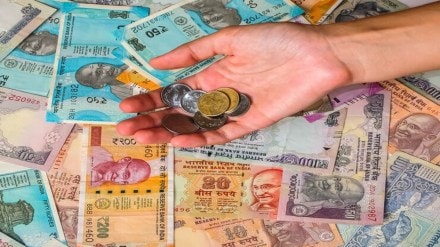The net financial liabilities of India’s households went up to Rs 18.79 lakh crore in FY24 or 6.4% of gross domestic product (GDP). To be sure, this is a fairly substantial jump over the levels seen in the previous year when the liabilities were Rs 15.96 lakh crore or 5.9% of GDP. An analysis by CareEdge had shown that to be the highest levels in many years and significantly higher than the pre-pandemic average of 3.4%. By that yardstick, the 6.4% of GDP for FY24 appears to be somewhat high. However, there is no reason for alarm. Given the proliferation of lenders — banks, fintechs, and non-banking financial companies — over the past decade, credit has been growing at a brisk pace in the last few years. Indeed, bank credit was growing at 15-16% before it slowed to the current levels of 11-12%. As a CRISIL analysis shows, households have been borrowing at a faster pace than they have been saving since the Covid-19 pandemic.
Lenders have been disbursing both secured loans such as mortgages and unsecured loans including against credit cards. For instance, in the FY20-24 period, housing loans from banks saw a compound annual growth rate (CAGR) of 19%, faster than the pre-pandemic CAGR of 15.5% between FY09 and FY19. Personal loans from banks have grown at a CAGR of 18.2%, notably faster than the 15.1% CAGR reported in the pre-pandemic decade. Again, credit card debt grew at a CAGR of 21% in the FY20-24 period, far higher than the CAGR of about 12% in the decade of FY09-19. While mortgages form a big chunk of consumer loans, a substantial portion has been borrowed for consumption — staples, discretionary, education, and health. A part of this could turn into bad loans. However, the Reserve Bank of India (RBI) has moved to curb unsecured consumer lending, believing it was getting out of hand in the absence of real-time data on customers. Among the regulator’s concerns was the fact that some individuals were taking two or three loans simultaneously without the lenders being aware of this. In November 2023, the RBI clamped down on unsecured credit. Lending norms were tightened with the risk weights for some unsecured retail loans raised from 100% to 125%, and the risk weights for credit card loans hiked from 125% to 150%.
This is one reason why household leverage might well plateau by the end of the current fiscal. That would, in turn, improve net financial savings. It is a fact that the substantial increase in financial liabilities impacted net household financial savings in FY24, pulling it down to 5.3% of GDP. While this was an improvement over the 5% of GDP in the previous year, economists estimated it to be a five-decade low. In that sense, there is room for improvement. At the same time, the preliminary estimates from the RBI show that the flows to gross financial assets at 11.6% of GDP improved from 10.9% in FY23, which is above average and therefore encouraging. In the current year too, flows into mutual funds have been strong, insurance premium collections are holding up, deposits are growing at 10-11%, and small savings too are growing. While the data for the current fiscal is not available, the weaker personal credit lending should help lower liabilities and boost savings. That’s important because household savings bankroll a large proportion of the country’s investment.
